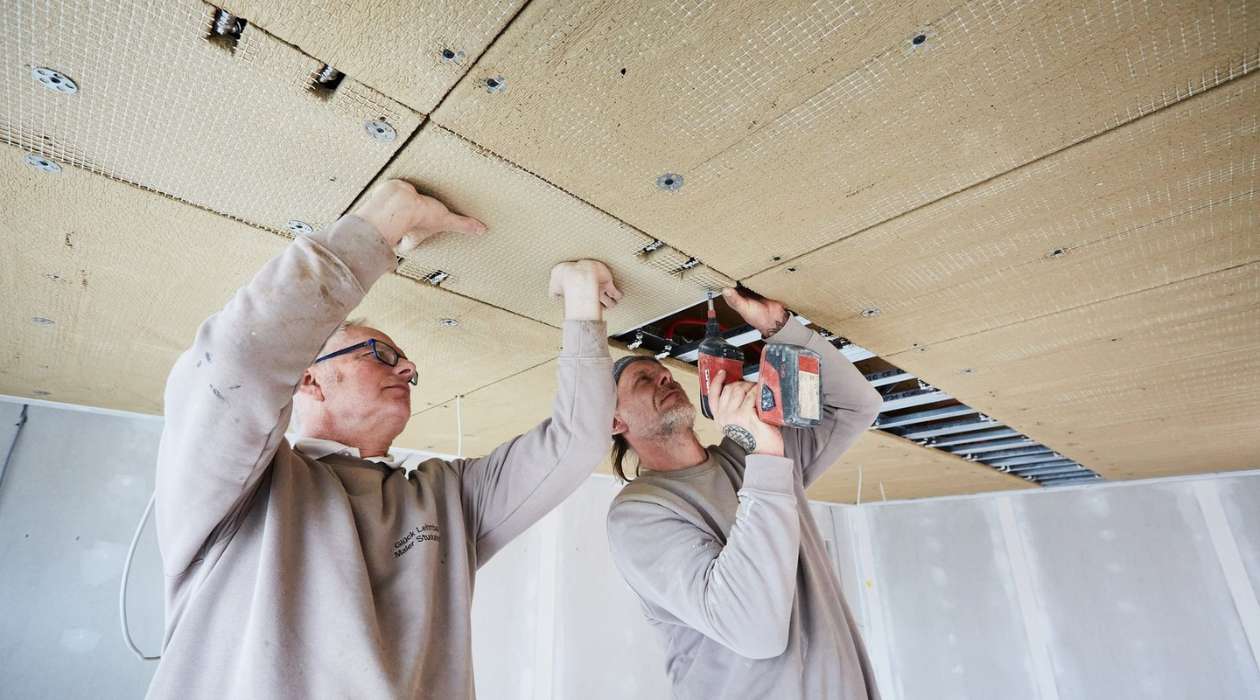

Articles
How Does Ceiling Heat Work
Modified: December 7, 2023
Learn how ceiling heat works and its benefits in our informative articles. Find out how this efficient heating system can keep your home warm and cozy.
(Many of the links in this article redirect to a specific reviewed product. Your purchase of these products through affiliate links helps to generate commission for Storables.com, at no extra cost. Learn more)
Introduction
Welcome to the world of ceiling heat! In this article, we will explore the fascinating world of ceiling heat and how it works to keep you warm and cozy. Whether you’re considering installing a new heating system or simply curious about how your existing ceiling heat functions, you’ve come to the right place.
Ceiling heat is an innovative and efficient way to warm up your living space. It involves the installation of a heating system directly into the ceiling, providing uniform heat distribution throughout the room. Unlike traditional heating methods, such as forced-air systems or radiators, ceiling heat operates silently and eliminates the need for bulky equipment or visible heating elements.
What makes ceiling heat particularly appealing is its ability to provide radiant heat. This means that instead of heating the air, the system emits infrared radiation that directly warms objects and people in the room. This results in a comfortable and consistent temperature, with no hot or cold spots.
In this article, we will delve into the different types of ceiling heat systems, including electric radiant ceiling heat and hydronic radiant ceiling heat. We will explore how they work, their benefits, drawbacks, and how they compare to other heating systems. Whether you’re a homeowner or a professional in the HVAC industry, you’ll gain valuable insights into the world of ceiling heat.
So, grab a cup of tea, sit back, and get ready to learn everything there is to know about ceiling heat!
Key Takeaways:
- Ceiling heat systems, whether electric radiant or hydronic, offer even and consistent warmth, energy efficiency, quiet operation, and aesthetic appeal. They provide a cozy and inviting living or working environment with customizable control.
- Proper maintenance and care, including regular cleaning, filter checks, and professional inspections, are essential for ensuring the longevity and optimal performance of ceiling heat systems. Comparing with other heating methods can help make informed decisions based on specific heating needs and preferences.
Read more: How Does Radiant Floor Heating Work
Overview of Ceiling Heat
Ceiling heat is a heating system that utilizes the existing ceiling structure to distribute warmth throughout a room. It offers numerous advantages over traditional heating methods and is becoming increasingly popular among homeowners and commercial building owners alike.
One of the key benefits of ceiling heat is its ability to provide even and comfortable heating. Unlike forced-air systems that can create drafts or radiators that result in inconsistent temperature distribution, ceiling heat ensures that every corner of the room receives the same level of warmth.
Ceiling heat is also known for its efficiency. By using radiant heat, which warms objects and people directly instead of heating the air, it minimizes energy waste. This not only reduces utility bills but also contributes to a more sustainable and eco-friendly home or building.
Another advantage of ceiling heat is its aesthetic appeal. Since the heating elements are hidden within the ceiling, there are no visible radiators or vents that disrupt the interior design. This provides more flexibility in decorating and arranging furniture, as there are no obstructions to consider.
Furthermore, ceiling heat operates silently, creating a peaceful and noise-free environment. Unlike forced-air systems that produce the sound of blowing air or radiators that can produce hissing or clanging noises, ceiling heat ensures a calm and serene atmosphere.
There are two main types of ceiling heat systems: electric radiant ceiling heat and hydronic radiant ceiling heat. Electric radiant ceiling heat involves the use of electrical cables or panels installed in the ceiling to generate heat. Hydronic radiant ceiling heat, on the other hand, utilizes water pipes embedded in the ceiling to circulate hot water and provide warmth.
Both types of ceiling heat systems offer their own set of advantages and considerations, depending on the specific needs and preferences of the user. Factors such as installation cost, energy efficiency, and maintenance requirements should be taken into account when choosing between electric or hydronic radiant ceiling heat.
In the next sections of this article, we will explore in more detail how electric and hydronic radiant ceiling heat systems work, their benefits, drawbacks, and the installation process. So, keep reading to discover the inner workings of these innovative heating systems!
Types of Ceiling Heat Systems
When it comes to ceiling heat systems, there are two main types: electric radiant ceiling heat and hydronic radiant ceiling heat. Let’s delve into each type and understand how they work and differ from each other.
Electric Radiant Ceiling Heat
Electric radiant ceiling heat systems operate by using electrical cables or panels that are embedded in the ceiling. These cables or panels radiate heat directly into the room, providing a comfortable and uniform temperature. The installation process involves running the electrical wiring through the ceiling and connecting it to a thermostat or a control panel.
One of the major advantages of electric radiant ceiling heat is its simplicity and ease of installation. The system requires minimal hardware and can be easily retrofitted into existing buildings. Additionally, electric radiant ceiling heat provides quick and responsive heating, as there is no waiting for water to heat up, as with hydronic systems.
Another benefit of electric radiant ceiling heat is its energy efficiency. The system turns on and off quickly, only heating the room when needed, resulting in lower energy consumption and reduced utility bills. It also eliminates the need for ductwork, which can result in heat loss and inefficient heating.
However, electric radiant ceiling heat systems can be more expensive to operate compared to hydronic systems, especially in areas with high electricity rates. The installation cost can also be higher due to the need for electrical wiring and panels. Nevertheless, the long-term energy savings and the comfort provided by electric radiant ceiling heat make it a popular choice among homeowners.
Hydronic Radiant Ceiling Heat
Hydronic radiant ceiling heat systems utilize hot water circulated through pipes that are embedded in the ceiling. The heated water radiates warmth, providing a cozy and comfortable environment. The water is usually heated by a boiler or a heat pump, and the system is controlled through a thermostat or a control panel.
One of the advantages of hydronic radiant ceiling heat is its energy efficiency. Water has a higher heat capacity compared to air, allowing for efficient transfer of heat throughout the room. The system operates at lower temperatures and retains heat for longer periods, resulting in energy savings and a more consistent temperature.
Hydronic radiant ceiling heat systems are also known for their quiet operation. Since there are no fans or blowers involved, the system operates silently without creating any noise disturbances. This makes it an ideal choice for bedrooms, offices, or any space where peace and quiet are desired.
However, the installation of hydronic radiant ceiling heat systems can be more complex and costly compared to electric systems. It requires the installation of water pipes throughout the ceiling, which may involve significant construction work. Additionally, the system requires a boiler or heat pump to heat the water, adding to the initial investment cost.
Despite these considerations, many homeowners and building owners find the energy efficiency and comfortable warmth provided by hydronic radiant ceiling heat systems worth the investment.
Now that we have explored the two main types of ceiling heat systems, it’s time to dive into how these systems actually work and what makes them so efficient at providing warmth. Keep reading for a detailed explanation of the inner workings of electric and hydronic radiant ceiling heat systems.
Read more: How Does A Central Heating System Work
Electric Radiant Ceiling Heat
Electric radiant ceiling heat is a type of ceiling heat system that uses electrical cables or panels installed in the ceiling to generate heat. This innovative heating method offers several benefits and is a popular choice for homeowners looking for efficient and comfortable warmth.
The operation of electric radiant ceiling heat is relatively simple. The electrical cables or panels are embedded within the ceiling, hidden from view. When the system is activated, the cables or panel heat up and emit radiant heat into the room. This heat then warms up the objects and people in the space, creating a cozy and comfortable environment.
One of the key advantages of electric radiant ceiling heat is its simplicity and ease of installation. Depending on the specific system, the electrical cables or panels can be easily retrofitted into existing ceilings or incorporated into new construction. The installation process usually involves running the electrical wiring through the ceiling and connecting it to a thermostat or control panel.
Electric radiant ceiling heat provides quick and responsive heating. Unlike other heating systems that require time for water to heat up or air to circulate, electric radiant ceiling heat emits heat immediately upon activation. This means you can enjoy a warm and comfortable space in no time.
Energy efficiency is another notable benefit of electric radiant ceiling heat. The system only heats the room when needed, and the heat is directed downwards, reducing the chances of heat loss. With no ductwork or air leakage, the system ensures efficient and even heat distribution throughout the room.
However, it is important to consider potential drawbacks of electric radiant ceiling heat. One consideration is the operating cost, which can be higher compared to other heating systems, especially in areas with high electricity rates. It is recommended to compare energy costs and efficiency ratings before making a decision.
Another consideration is the installation cost. While electric radiant ceiling heat tends to have lower installation costs compared to other heating systems, it still involves electrical wiring and panels, which may require professional assistance for proper installation.
Maintenance for electric radiant ceiling heat systems is minimal. Regular cleaning and inspection of the heating elements and electrical components are typically all that’s required. It is also important to ensure that the thermostat or control panel is functioning effectively to maintain optimal temperature control.
Despite these considerations, electric radiant ceiling heat provides an efficient and effective way to heat your living space. It offers quick and responsive heating, uniform temperature distribution, and the ability to customize comfort settings with programmable thermostats. So, if you’re looking for a heating system that is silent, energy-efficient, and provides cozy warmth, electric radiant ceiling heat may be the perfect choice for you.
Continue reading to learn more about a different type of ceiling heat system – hydronic radiant ceiling heat.
Hydronic Radiant Ceiling Heat
Hydronic radiant ceiling heat is a type of ceiling heat system that uses hot water circulated through pipes installed in the ceiling to provide warmth. This efficient and effective heating method is favored by many homeowners and commercial building owners for its comfort and energy efficiency.
The operation of hydronic radiant ceiling heat begins with a boiler or a heat pump heating the water to the desired temperature. The hot water is then circulated through a network of pipes that are embedded within the ceiling. As the heated water flows through the pipes, it radiates heat into the room, warming up the objects and people in its path.
One of the key advantages of hydronic radiant ceiling heat is its energy efficiency. Water has a higher heat capacity than air, allowing it to retain heat for longer periods. This means that the system can operate at lower temperatures while still providing comfortable warmth. The energy savings from using lower water temperatures can significantly reduce heating costs.
Hydronic radiant ceiling heat systems also offer quiet operation. Without the need for fans or blowers, the system operates silently, creating a peaceful and serene environment. This makes it particularly well-suited for bedrooms, offices, or any space where noise disruption needs to be minimized.
Another benefit of hydronic radiant ceiling heat is its ability to provide uniform heat distribution. The heated water radiates heat evenly throughout the room, eliminating cold spots and ensuring a comfortable temperature in every corner. This is in contrast to forced-air systems that can create drafts or radiators that can result in uneven heating.
Installation of hydronic radiant ceiling heat systems can be more complex compared to electric systems. It involves the installation of water pipes throughout the ceiling, which may require significant construction work. The system also requires a boiler or heat pump to heat the water, adding to the initial installation cost. However, the long-term energy savings and comfort provided by hydronic radiant ceiling heat often outweigh the initial investment.
Maintenance for hydronic radiant ceiling heat systems is generally low. Regular checks on the boiler or heat pump, as well as the control system, are important to ensure optimal performance. It is also necessary to inspect the pipes for any leaks or potential damage periodically.
If you’re looking for a heating system that offers energy efficiency, quiet operation, and uniform heat distribution, hydronic radiant ceiling heat is an excellent choice. Its ability to provide comfortable warmth while keeping energy consumption in check makes it a popular option among homeowners and building owners alike.
Continue reading to learn more about how ceiling heat systems work and the benefits and drawbacks of using such heating systems.
How Ceiling Heat Works
Ceiling heat systems work by utilizing the existing ceiling structure to generate and distribute warmth throughout a room. Whether it’s electric radiant ceiling heat or hydronic radiant ceiling heat, the underlying principle remains the same – emitting heat from the ceiling downwards to create a comfortable environment.
In the case of electric radiant ceiling heat, the system employs electrical cables or panels that are installed within the ceiling. When activated, these cables or panels heat up and emit radiant heat. This heat then radiates downwards, warming up the objects and people in the room. The electrical cables or panels can be controlled via a thermostat or a control panel to maintain the desired temperature.
Hydronic radiant ceiling heat, on the other hand, uses hot water circulated through pipes embedded in the ceiling. A boiler or heat pump heats the water and pumps it through these pipes, which radiate the heat downwards into the room. The temperature of the water can be controlled with a thermostat or a control panel to achieve the desired level of comfort.
Both electric and hydronic radiant ceiling heat systems offer the benefit of radiant heating. Instead of heating the air, these systems directly warm up objects and people in the room. This provides a more comfortable and consistent temperature, as there are no drafts or cold spots. Additionally, radiant heating is known to be more energy-efficient compared to heating methods that rely on convection, as it minimizes heat loss.
The efficiency of ceiling heat systems is also attributed to their ability to provide even heat distribution. With the heat source located on the ceiling, the warmth is distributed uniformly throughout the room. This eliminates the need for vents or radiators positioned on the walls, which can result in uneven heating.
In terms of control, both electric and hydronic radiant ceiling heat systems can be adjusted to meet specific temperature requirements. With the use of thermostats or control panels, users can set their preferred temperature and easily maintain a comfortable environment.
It’s important to note that proper insulation is necessary for ceiling heat systems to work effectively. Adequate insulation prevents heat loss through the ceiling and ensures that the warmth remains inside the room. This is especially crucial for energy efficiency and maintaining a consistent temperature.
Overall, the functioning of ceiling heat systems is straightforward yet efficient. By utilizing the ceiling as a heat source, these systems provide comfortable warmth, even heat distribution, and customizable temperature control. Whether it’s electric or hydronic radiant ceiling heat, the goal remains the same – to create a cozy and inviting space for occupants to enjoy.
Next, we will explore the benefits and drawbacks of ceiling heat systems, giving you a comprehensive understanding of whether this heating method is the right choice for your needs.
Benefits of Ceiling Heat
Ceiling heat systems offer a range of benefits that make them an attractive heating option for homeowners and commercial building owners. Let’s explore some of the advantages of using ceiling heat:
Read more: How Does Oil Central Heating Work
1. Even and Consistent Heating
Ceiling heat systems provide uniform heat distribution throughout the room. Unlike traditional heating methods that can create hot or cold spots, ceiling heat ensures that every corner of the space receives the same level of warmth. This eliminates discomfort and allows for a consistent temperature, providing a cozy and comfortable environment.
2. Energy Efficiency
Ceiling heat systems are known for their energy efficiency. By emitting radiant heat directly into the room, these systems minimize heat loss and maximize heat absorption by objects and people in the space. This means that less energy is wasted compared to heating methods that rely on convection. As a result, ceiling heat can lead to reduced energy consumption and lower utility bills.
3. Silent Operation
Ceiling heat operates silently, providing a peaceful and noise-free environment. Unlike forced-air systems that produce the sound of blowing air or radiators that can create hissing or clanging noises, ceiling heat systems work quietly in the background. This is particularly beneficial for bedrooms, offices, or any space where noise disruption needs to be minimized.
4. Aesthetic Appeal
With ceiling heat, there are no visible heating elements or radiators, which can disrupt the interior design of a space. The heating components are hidden within the ceiling, allowing for a clean and unobstructed look. This provides more flexibility in decorating and arranging furniture without any obstructions to consider.
Read more: How Does Heat Pump Water Heater Work
5. Quick and Responsive Heating
Ceiling heat systems offer rapid and responsive heating. Unlike heating methods that require time for water to heat up or air to circulate, ceiling heat emits heat immediately upon activation. This means you can enjoy a warm and comfortable space in no time, especially during the cold winter months.
6. Customizable Control
Most ceiling heat systems come with thermostats or control panels that allow users to easily adjust and maintain the desired temperature. This level of control ensures personalized comfort, allowing you to adapt the heating settings to your preferences and optimize energy usage.
7. Space-Saving Design
Ceiling heat systems eliminate the need for bulky heating equipment or radiators that take up valuable floor space. By utilizing the ceiling as the heat source, these systems free up room and provide more flexibility in furniture arrangement. This is particularly advantageous for smaller living spaces or areas where maximizing floor space is essential.
Overall, ceiling heat systems offer a range of benefits, including even heating, energy efficiency, quiet operation, aesthetic appeal, quick heating, customizable control, and space-saving design. Whether it’s for residential or commercial use, ceiling heat provides a comfortable and efficient heating solution.
Next, let’s explore some of the drawbacks and considerations associated with ceiling heat systems to provide a well-rounded assessment of this heating method.
Drawbacks of Ceiling Heat
While ceiling heat systems have numerous advantages, it’s important to consider some of the drawbacks and limitations that come with this heating method. Here are a few factors to keep in mind:
Read more: How Does A Swimming Pool Heat Pump Work
1. Installation Complexity
Installing a ceiling heat system can be more complex compared to other heating methods. It often involves running electrical wiring or water pipes through the ceiling, which may require professional assistance and potentially significant construction work. The complexity of the installation process can result in higher upfront costs and longer installation times.
2. Retrofitting Challenges
If you’re considering installing a ceiling heat system in an existing building, retrofitting can pose challenges. Accessing the ceiling may require additional structural modifications, especially if there are limited or no existing provisions for a ceiling heat system. This can increase the overall installation costs and potentially disrupt the current layout or design of the space.
3. Initial Investment Cost
The initial investment cost of a ceiling heat system can be higher compared to some traditional heating methods. This is particularly true for hydronic radiant ceiling heat systems that require the installation of a boiler or heat pump. While the long-term energy savings may offset the initial cost, it’s essential to consider the upfront investment required for these systems.
4. Limited Cooling Capability
Unlike traditional HVAC systems that can both heat and cool a space, ceiling heat systems are primarily designed for heating purposes. They focus on providing efficient and comfortable warmth during the colder months, but they do not have built-in cooling capabilities. In regions with hot summers, additional cooling systems such as fans or air conditioners may be necessary.
Read more: How Does A Heat Pump Air Conditioner Work?
5. Maintenance and Repair Challenges
While ceiling heat systems generally require minimal maintenance, any repairs or issues with the system can be more challenging to address due to their location within the ceiling. Depending on the specific system, accessing and diagnosing problems may require professional assistance. It’s important to factor in potential maintenance and repair costs when considering a ceiling heat system.
6. Operating Cost Considerations
The operating cost of a ceiling heat system can vary depending on factors such as electricity or fuel prices and overall energy efficiency. Electric radiant ceiling heat systems, for example, may have higher operating costs in areas with expensive electricity rates. It’s important to assess and compare the energy costs of different heating systems before making a decision.
While these drawbacks may influence your decision to choose a ceiling heat system, it’s crucial to weigh them against the benefits and your specific heating needs. For many individuals, the advantages of ceiling heat, such as even heat distribution, energy efficiency, and aesthetic appeal, outweigh the drawbacks.
Now that we’ve explored the benefits and drawbacks of ceiling heat systems, let’s dive into the installation process and the maintenance and care required to ensure the longevity and optimal performance of your ceiling heat system.
Installation Process
The installation process of a ceiling heat system can vary depending on the specific type of system, whether it’s electric radiant ceiling heat or hydronic radiant ceiling heat. It typically involves several steps to ensure proper installation and optimal performance. Here’s a general overview of the installation process:
1. Planning and Design
The first step in installing a ceiling heat system is proper planning and design. This includes assessing the specific heating needs of the space, determining the size and capacity of the system required, and considering any structural or electrical requirements. Consulting with a professional HVAC technician is recommended to ensure that the system is appropriate for your space.
Read more: How To Work A Thermostat For Heating
2. Preparing the Ceiling
Before installation, the ceiling needs to be prepared. This may involve removing any existing ceiling material to expose the structural components. If necessary, additional framing or support may be required to accommodate the installation of the heating system. It’s essential to ensure that the ceiling is in good condition and can safely support the weight of the system.
3. Electrical or Plumbing Preparation
For electric radiant ceiling heat systems, the preparation stage involves running electrical wiring through the ceiling. This includes connecting the cables to a power source and ensuring proper electrical connections. For hydronic radiant ceiling heat systems, the preparation involves installing water supply lines and connecting them to a boiler or heat pump. It’s important to comply with electrical and plumbing codes during this stage.
4. Installing the Heating Elements
Once the electrical or plumbing preparations are complete, the next step is to install the heating elements. For electric radiant ceiling heat systems, this involves securing the heating cables or panels within the ceiling and connecting them to the electrical wiring. For hydronic radiant ceiling heat systems, water pipes are embedded within the ceiling and connected to the water supply lines and boiler or heat pump. The installation should be carried out carefully and in accordance with the manufacturer’s instructions.
5. Insulation and Ceiling Finishing
After the heating elements are installed, it’s essential to properly insulate the ceiling to prevent heat loss and maximize energy efficiency. Insulation materials, such as fiberglass or foam, are added to create a thermal barrier that helps retain the warmth within the room. Once the insulation is in place, the ceiling can be finished with the desired material, such as drywall or ceiling tiles, to achieve the desired aesthetic appeal.
Read more: How A Ceiling Fan Works
6. Thermostat and Control Installation
The final step of the installation process is to install thermostats or control panels for temperature regulation and system operation. These devices allow users to adjust and maintain the desired temperature in the room. Proper placement and wiring of the thermostats or control panels are crucial to ensure accurate temperature control and ease of use.
It’s worth noting that the installation process may involve working with electrical and/or plumbing systems, which may require the expertise of a licensed professional. Consulting with a qualified HVAC technician is highly recommended to ensure that the installation is carried out safely and in compliance with local regulations.
Once the installation is complete, it’s important to follow the manufacturer’s guidelines for system operation and maintenance to ensure optimal performance and longevity of your ceiling heat system.
Next, we will explore the maintenance and care required for your ceiling heat system to keep it running smoothly and efficiently.
Maintenance and Care
Proper maintenance and care of your ceiling heat system are essential to ensure its longevity, efficiency, and optimal performance. Regular maintenance not only helps prevent potential issues but also helps maintain a comfortable and cozy environment in your space. Here are some important maintenance tasks to consider:
1. Regular Cleaning
Regularly clean the heating elements of your ceiling heat system to remove any dust, debris, or buildup that can hinder performance. For electric radiant ceiling heat systems, use a soft cloth or brush to gently wipe the surface of the heating cables or panels. For hydronic radiant ceiling heat systems, ensure that the pipes are clean and free from any obstructions.
2. Check and Replace Filters
If your ceiling heat system includes air filters, make sure to check and replace them as recommended by the manufacturer. Filters help maintain proper airflow and prevent dust and allergens from circulating in the room. Clean filters contribute to better indoor air quality and better overall system efficiency.
Read more: Why Is Central Heating Not Working
3. Inspect Wiring and Connections
Regularly inspect the electrical wiring and connections of your electric radiant ceiling heat system. Look for any signs of damage or wear and ensure that all connections are secure. For hydronic radiant ceiling heat systems, periodically check the integrity of the water pipes and connections, looking for any leaks or corrosion that may need attention.
4. Test Thermostat or Control Panel
Verify the functionality of your thermostat or control panel by testing and adjusting it periodically. Ensure that the temperature readings are accurate and that the system responds properly to temperature changes. If you notice any issues with the thermostat or control panel, consult a professional technician for inspection and repair.
5. Check Insulation
Regularly check the integrity of the insulation in your ceiling to ensure proper heat retention. Insulation helps prevent heat loss and promotes energy efficiency. If you notice any damage or deteriorated insulation, consider replacing or repairing it to maintain optimum efficiency.
6. Schedule Professional Inspections
Consider scheduling regular professional inspections of your ceiling heat system. HVAC technicians can perform thorough maintenance checks, identify potential issues, and address any necessary repairs or adjustments. Their expertise can help ensure that your system operates efficiently and effectively.
Read more: How Central Heating Works In The UK
7. Follow Manufacturer’s Guidelines
Always follow the manufacturer’s guidelines and recommendations for maintenance and care. These guidelines may include specific instructions for your particular ceiling heat system. By adhering to these instructions, you can maximize the performance, energy efficiency, and lifespan of your system.
Remember to always prioritize safety when performing maintenance tasks. If you are unsure about any maintenance procedures, it is recommended to consult with a professional HVAC technician for guidance.
By following these maintenance and care practices, you can enjoy the benefits of a well-functioning and efficient ceiling heat system for years to come.
Now, let’s move on to comparing ceiling heat systems with other heating methods to help you make an informed decision for your specific heating needs.
Comparison with Other Heating Systems
When it comes to choosing a heating system for your home or building, it’s important to compare the different options available. Let’s compare ceiling heat systems with other popular heating methods to help you make an informed decision:
1. Forced-Air Systems (Furnaces)
Forced-air systems, commonly known as furnaces, use a central unit to heat air, which is then distributed throughout the building via ductwork and vents. Compared to ceiling heat systems, forced-air systems can be less energy-efficient, as they may result in heat loss due to airflow through ducts. Additionally, forced-air systems can create drafts and circulating allergens. However, they are generally less expensive to install, and some models can also provide cooling capabilities.
2. Radiators
Radiators are a traditional heating method that uses hot water or steam to warm up the air in a room. They are typically placed along the walls and can provide a high level of heat output. However, radiators can result in uneven heat distribution and occupy wall space, limiting furniture placement. They can also be prone to leaks and require regular maintenance. Ceiling heat systems offer more even heat distribution and a cleaner aesthetic, without taking up valuable wall space.
3. Heat Pumps
Heat pumps are highly efficient heating and cooling systems that extract heat from the outside air, even in cold temperatures, and transfer it indoors. They can provide both heating and cooling capabilities, making them versatile options. While heat pumps can be energy-efficient, they may struggle to provide sufficient heat in very cold climates. In comparison, ceiling heat systems offer consistent and comfortable warmth, particularly in colder regions.
4. Baseboard Heaters
Baseboard heaters are individual units placed along the baseboards of a room that rely on convection to warm the air. While baseboard heaters are relatively affordable and easy to install, they can result in uneven heating and take up valuable wall space. Ceiling heat systems, on the other hand, provide even heat distribution and free up wall space, allowing for more flexibility in furniture arrangement and decor.
5. Underfloor Heating
Underfloor heating systems, also known as radiant floor heating, involve heating elements installed beneath the floor, which radiate heat upwards. They offer similar benefits to ceiling heat systems, such as even heat distribution and energy efficiency. However, underfloor heating can be more expensive to install and may require additional construction work. Ceiling heat systems are generally easier to install and retrofit into existing structures.
Ultimately, the choice between ceiling heat systems and other heating methods depends on your specific requirements, preferences, and budget. Consider factors such as energy efficiency, even heat distribution, aesthetic appeal, installation cost, and ease of maintenance when making your decision.
Consulting with a professional HVAC technician can provide valuable insights into the best heating system for your specific needs and help you make an informed decision.
Now that we’ve covered the comparison with other heating systems, let’s conclude our exploration of ceiling heat systems.
Conclusion
Ceiling heat systems offer a unique and efficient heating solution that provides numerous benefits for homeowners and building owners. Whether it’s electric radiant ceiling heat or hydronic radiant ceiling heat, these systems provide even and consistent warmth, energy efficiency, quiet operation, aesthetic appeal, and customizable control.
Electric radiant ceiling heat systems use electrical cables or panels to radiate heat directly into the room, offering quick and responsive heating. Hydronic radiant ceiling heat systems utilize water circulated through pipes embedded in the ceiling, providing energy-efficient warmth and quiet operation. Both types of systems offer even heat distribution, promoting comfort in every corner of the room.
Installation of ceiling heat systems involves careful planning, preparation of the ceiling, installation of heating elements, insulation, and the addition of thermostats or control panels. It’s important to follow proper installation procedures, which may require professional assistance, to ensure optimal performance and safety.
To maintain the longevity and efficiency of your ceiling heat system, regular maintenance and care are crucial. This includes cleaning the heating elements, checking and replacing filters, inspecting wiring and connections, testing the thermostat or control panel, checking insulation, and scheduling professional inspections. Adhering to manufacturer’s guidelines and consulting with HVAC professionals will help keep your system running smoothly.
When considering a heating system, it’s important to compare the advantages and drawbacks of ceiling heat systems with other heating methods. Each option has its unique features, installation requirements, and operating costs. Forced-air systems, radiators, heat pumps, baseboard heaters, and underfloor heating all offer different benefits and considerations to keep in mind. It’s essential to choose a system that best fits your specific heating needs, comfort preferences, and budget.
In conclusion, ceiling heat systems provide efficient, comfortable, and customizable warmth while offering benefits such as even heat distribution, energy efficiency, quiet operation, and aesthetic appeal. By understanding how ceiling heat works, comparing it with other heating methods, and properly maintaining the system, you can enjoy a cozy and inviting living or working environment.
Whether you’re considering installing a ceiling heat system or already have one in place, the knowledge gained from this article will guide you in making informed decisions and ensuring the optimal performance of your heating system for years to come.
Frequently Asked Questions about How Does Ceiling Heat Work
Was this page helpful?
At Storables.com, we guarantee accurate and reliable information. Our content, validated by Expert Board Contributors, is crafted following stringent Editorial Policies. We're committed to providing you with well-researched, expert-backed insights for all your informational needs.
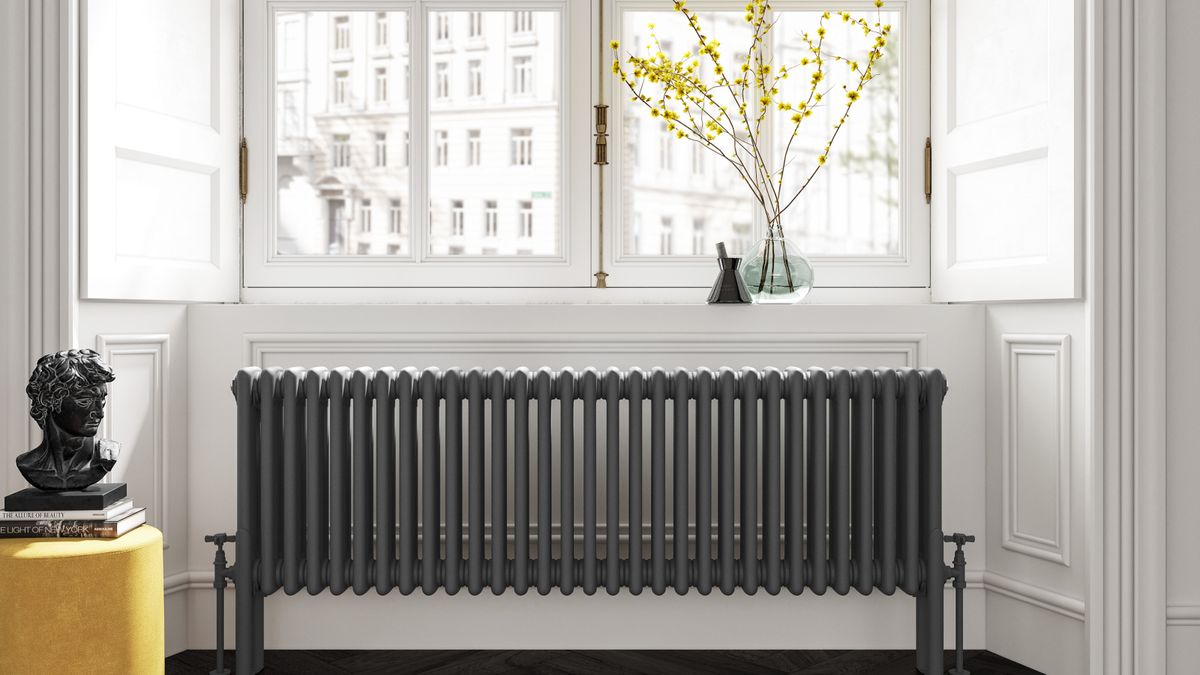
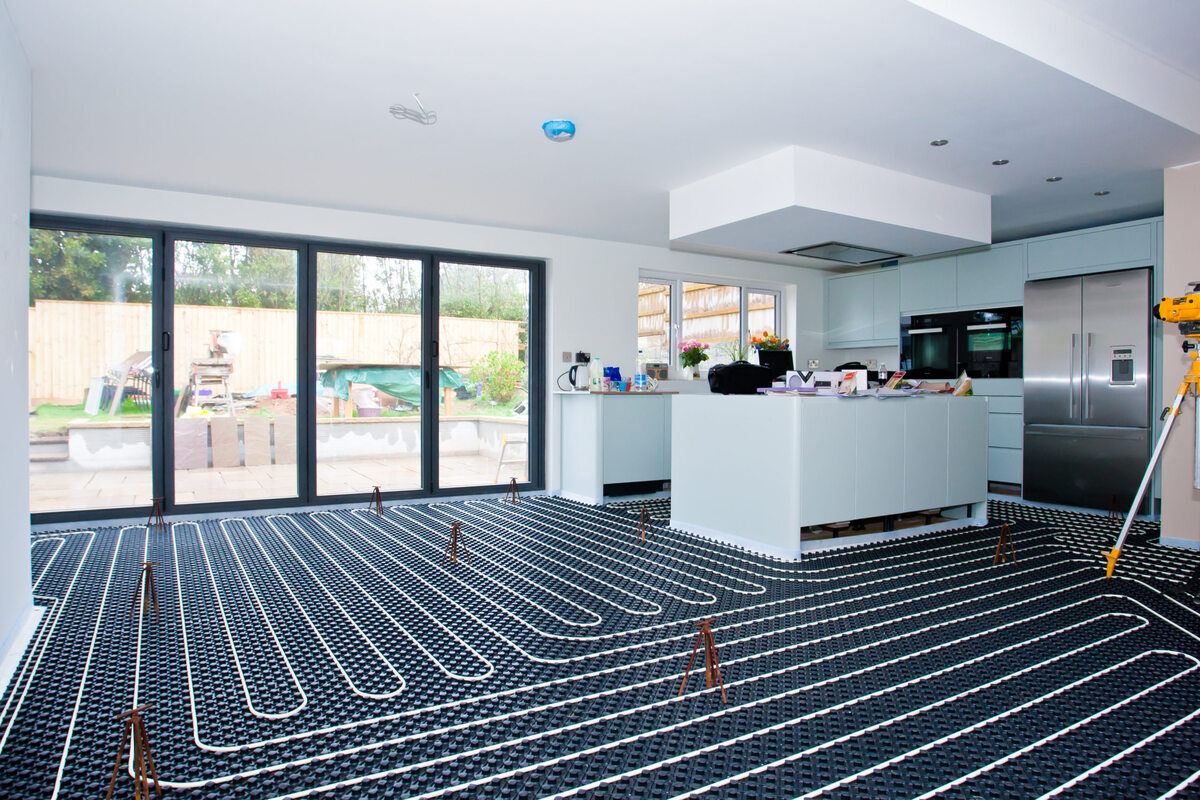
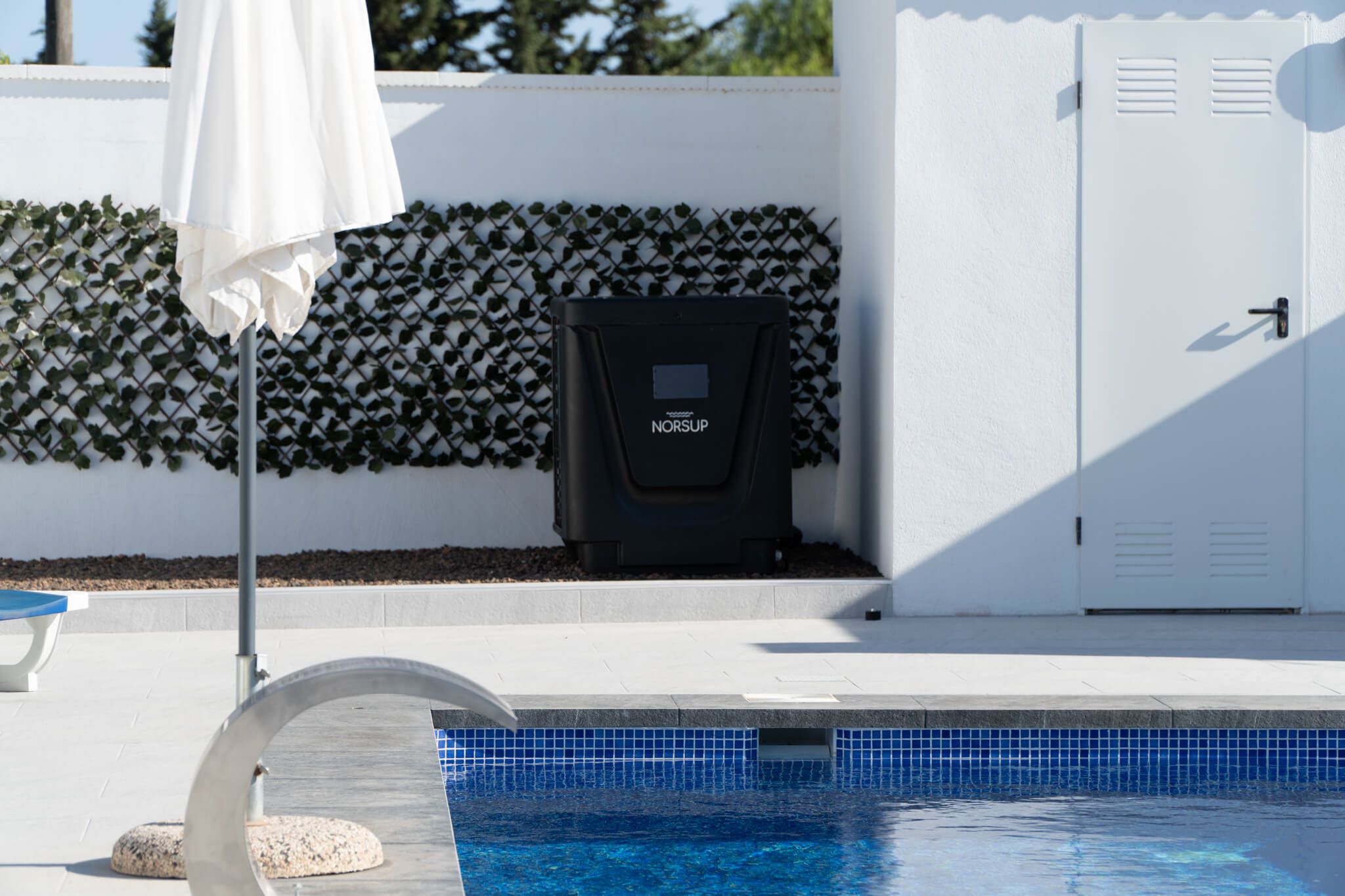
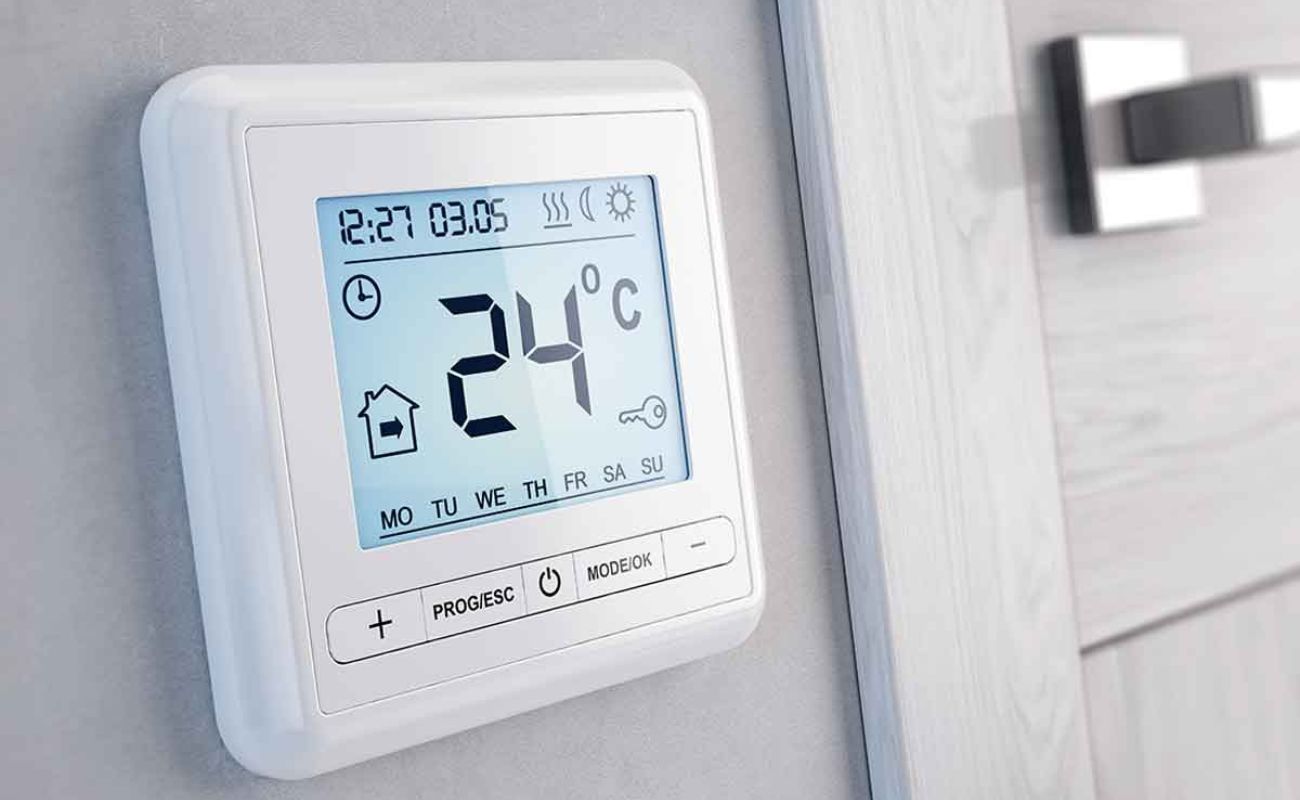
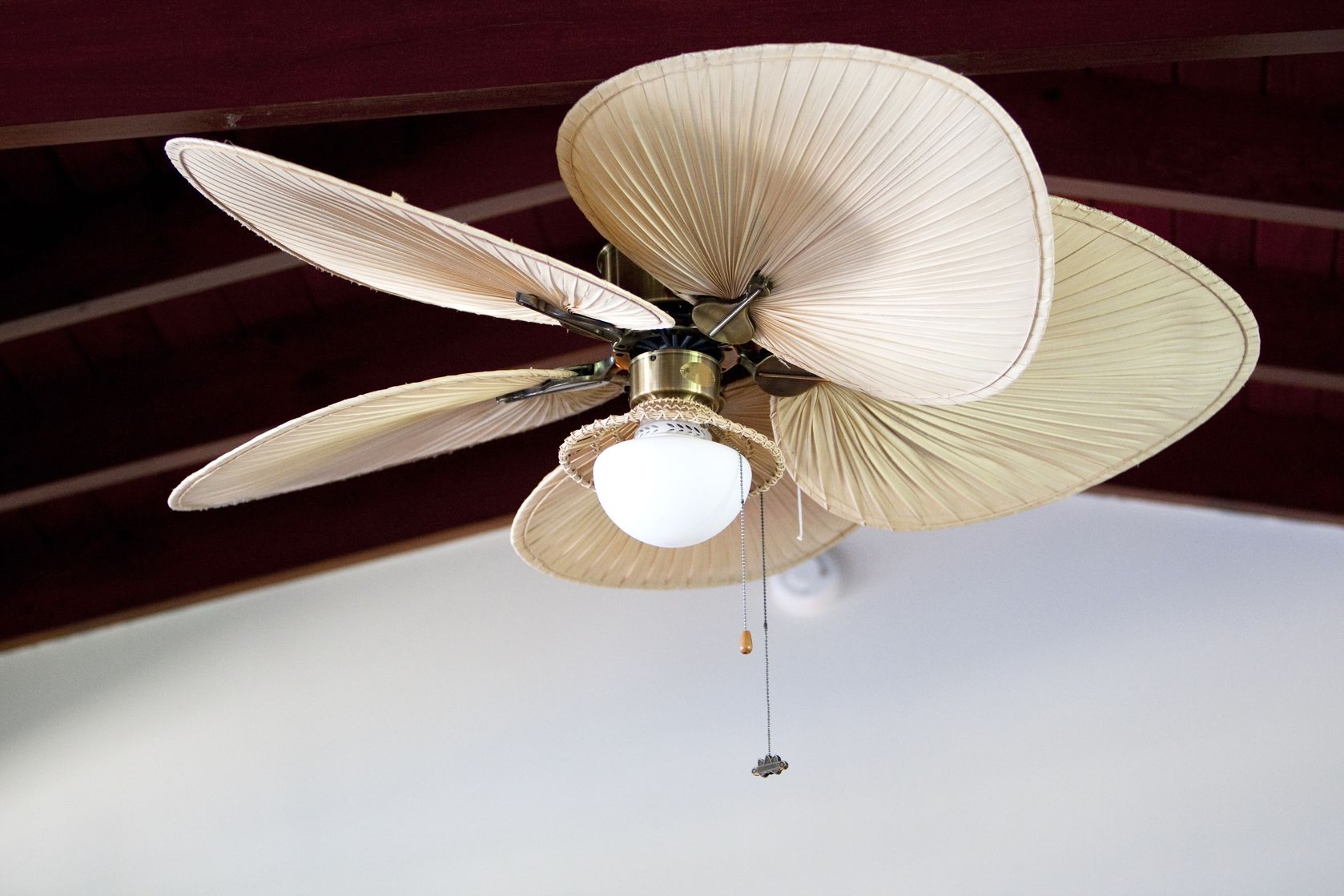

0 thoughts on “How Does Ceiling Heat Work”